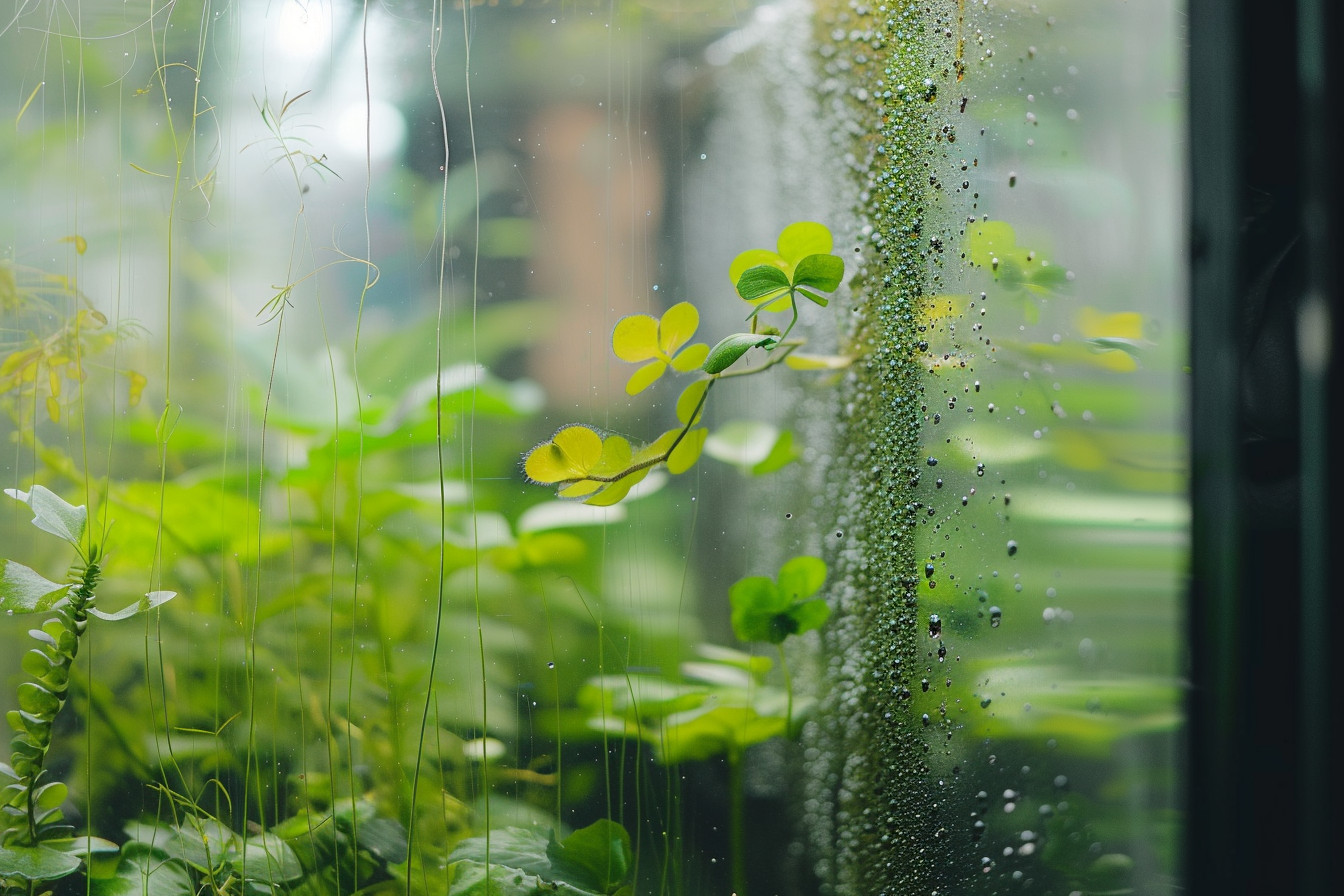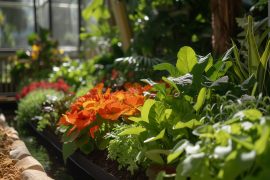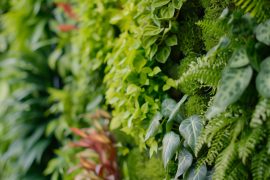Dealing with algae can be a real headache for anyone tinkering around with aquaponic systems. Let me tell you, I’ve been there fighting the good fight against that green goo myself. It’s not just about keeping our plants and fish happy anymore; managing algae has become an essential part of maintaining a balanced ecosystem within these closed-loop setups.
I’ve learned through trial and error, plus loads of research, how crucial it is to keep those uninvited guests under control without messing up my aquatic harmony. You see, controlling algae isn’t just for aesthetics; though, let’s be real, water does look pretty amazing; it plays a major role in ensuring your system runs efficiently without any hitch affecting plant growth or fish health negatively.
Now listen closely because what comes next could save you from making some common mistakes while giving you peace as serene as your garden ought to feel! Imagine having all this insightful knowledge at your fingertips, allowing both beginners and seasoned practitioners alike to navigate their way through various challenges presented by opportunistic algal blooms using simple yet effective strategies that maintain the equilibrium needed between beauty, tranquility, and productivity too!
Understanding Algae Growth in Aquaponic Systems
When you first dive into the world of aquaponics, it might seem a bit overwhelming. But let’s break it down together, especially when we’re talking about algae growth. This green stuff is kind of like that uninvited guest at your garden party—showing up without warning and hard to get rid of once they settle in.
First things first: not all algae are villains! In small amounts, some types can actually be beneficial by producing oxygen during daylight hours. Yet too much of this good thing quickly turns bad for several reasons:
- Algae compete with plants for nutrients essential for their (and the plants’) survival.
- High levels block sunlight, making photosynthesis a challenge.
Understanding why these leafy gatecrashers love hanging out so much involves looking at your system’s setup closely:
- Light’s basically an invitation since both aquatic lifeforms thrive on light exposure.
2. Environmental conditions such as temperature swings or imbalances in nutrient concentrations scream ‘party over here’ to algae.
It has been observed across various setups that certain factors invite more unwanted guests than others—a warm climate combined with slow-moving water practically sends them VIP invites!
Aiming for preventive measures right from the design phase mitigates potential outbreaks later on—covering tanks reduces available light while correctly balancing nutrient concentration, which means fewer free buffet lines opening up exclusively for algal blooms.
Maintaining balance is key—as any seasoned gardener will tell you—it goes beyond mere aesthetics; it digs deep into symbiosis between creatures residing within.
In my years tending gardens and nurturing systems for health, I’ve found patience coupled with keen observation nets the best results. Instead of jumping to chemical treatments, every sign of trouble considering natural alternatives often pays dividends long haul.
For instance, introducing species competes directly with resources, encouraging a controlled environment where harmony isn’t just an elusive dream but a tangible everyday reality.
The Importance of Managing Algae Growth
Getting a handle on algae in aquaponics is more than just keeping the water looking clean; it’s about ensuring the whole ecosystem thrives. You might be wondering, “Why all this fuss over a bit of green?” Well, let me dive into that.
First off, when algae gets out of control, it starts hogging all the nutrients and light—pretty greedy, if you ask me. This isn’t good news for our plant pals trying to grow in the same system. They end up starving for what they need to flourish because Mr. Algae has decided he wants it all.
Common Types of Algae in Aquaponic Systems
Aquaponics combines fish farming with vegetable production, creating a symbiotic environment where the waste produced by aquatic animals serves as nutrients for the plants. However, this delicate balance can be thrown off-kilter by algae growth. Understanding the common types of algae that invade aquaponic systems is crucial for maintaining a healthy garden.
Green water, or green algae, floats freely in your system’s water and is usually caused by an excess of sunlight combined with abundant nutrient levels. It resembles pea soup, and if you’ve ever seen it up close, trust me, it sticks around! But there’s beauty even here—the way each cell captures sunlight to grow mirrors our very purpose in gardening: absorbing what we need when we least expect resources from unexpected places.
Filamentous algae are another visitor, often knocking on our doors—or, I should say, clinging to any surface they find appealing—like strings or mats floating through my peaceful oasis, whispering tales about finding anchorage no matter how fluid life appears. Spreading across containers quickly makes tackling them interesting, but it is also necessary lest their cloak overshadow smaller voices within this watery world, such as plant seedlings sprouting new narratives under their shadowy presence.
Factors that Contribute to Algae Growth
Diving into the world of aquaponics, it’s easy to marvel at the ecosystem balance between fish and plants. However, one pesky issue can disrupt this harmony: algae growth. Recognizing what fuels these green invaders is key to maintaining a healthy aquaponic system.
Light exposure tops our list for its pivotal role in photosynthesis—an open invitation for algae to thrive. Think about sitting by your window on a sunny day; you’re basking in warmth, just like algae feast under ample light conditions. Aquatic systems placed where sunlight or artificial lights shine generously often witness rapid algae explosions.
Next up, we’ve got nutrients, mainly nitrogen compounds such as nitrates and phosphates, which are buffet lines for hungry, growing algalspores. Eskeepers face challenges with balancing nutrient levels because both plants and fish contribute to inconsistencies. Spikes here could mean rolling out the red carpet. Calcek A nutrient-rich environment means more “food” algal blooms, thus highlighting the importance of regular water testing and ensuring balanced ecosystems.
- Water temperature shouldn’t be overlooked either; warmer waters encourage faster metabolism transformations within microorganisms, including interfering infesting gardens. Considering most aquatic landscapes prefer temperatures hovering around comfortable room-setting degrees, Fahrenheit anomalies trigger simulating tropical paradise undesirables, especially during the summer months.
- Stagnant water plays the fifth wheel, contributing dirty little secrets. Still, fluids lack oxygen circulation, which is essential for keeping microbial life in check and slowing down decay processes. Perfect breeding ground for filamentous, stringy types making home amongst roots and leaf crevices Our aim is continual movement in babbling brooks rather than murky ponds.
To put things somewhat visually, imagine a small pond in the backyard. No matter how early morning dew sparkles surface beneath teaming unwanted guests thriving unchecked parameters Ultimately, controlling factors—light infusion fundamental understanding—solve the puzzle of managing algal intrusions, empowering gardeners to reclaim control over spirited ecosystems.
Keeping those pesky algae at bay isn’t just about keeping things looking neat—it’s crucial for the health and balance of your aquaponic system. Let me walk you through some tactics that have not only worked wonders for my setup but can help anyone aiming to achieve a serene, thriving garden beneath the water surface.
First up, let’s chat about blocking out light. You see, algae are like that one friend who always wants to go sunbathing; they love light! By covering your fish tanks and limiting sunlight exposure on any water surfaces, you’re essentially putting sunscreen over their plans. I found using thick materials or specifically designed covers does an outstanding job here—not allowing them even an inch means significant drops in unwanted greenery.
Moving onto our second strategy—introducing friendly competitors—sends these algal intruders packing by holding back resources they’d otherwise snatch up faster than cookies disappearing at a kid’s birthday party. Duckweed has been my personal favorite; it spreads across the top so well that most times I forget there’s actually water under there! Plus side? It’s healthy munchies for lots of aquatic critters too!
A decent filtration setup is something no self-respecting aquaponics enthusiast should skim on—you’d be surprised how effectively this move alone keeps those microscopic squatters away from your aqueous Eden.
- Mechanical filters catch sediments feeding into airborne freeloaders’ growth sprees.
- Meanwhile,biological filters ensure nutrient levels stay balanced, making sure plants get what they need without leaving leftovers lying around—which again would end up being open buffet invites sent straight to the Algaeville population: too much!
Lastly, I couldn’t stress enough maintaining proper plant stock density as another splendid tactic against invasion rounds coming from Team Green Goo slimes—an ideal ration between fishy friends below and greener buddies above helps keep everything everybody needs circulating smoothly with less waste stirred into inviting signals.
In summarizing things insightfully before diving headfirst once more:
- Lock Light Out: No peekaboos allowed if possible!
- Adopt Competitors: Friends are welcome aboard anytime.
- Focus sincerely and diligently on essential silent guards, a.k.a. filtering systems (don’t give slack off days!).
4) Balance your garden residents wisely: overcrowding leads nowhere pleasant visually nor aromatic experiences are considered either.
Natural Methods for Controlling Algae Growth
Tackling algae in aquaponic systems without reaching for harsh chemicals isn’t just better for our plants and fish; it also reconnects us with nature’s smart ways of maintaining balance. Now, let me walk you through some methods that keep things natural.
First off, consider plant cover. Floating plants like water lettuce or duckweed not only add a layer of beauty to your setup but also serve an important role: they shade the water surface, significantly reducing light penetration, which is one major factor contributing to algal blooms. It’s kind of incredible how much can be achieved by leveraging what Mother Nature already offers.
Then there’s barley straw—yes, you heard right! When decomposing under sunlight, this seemingly simple piece farmers have been using forever has proved itself quite useful against keeping those green waters at bay—even if scientists are still scratching their heads on exactly why it works so well!
- Floating Plants:
- Water Lettuce
- Duckweed
| Method | Benefits |
|---|---|
| Plant Cover | Reduces light and nutrient availability |
| The barley straw decomposition process releases compounds that inhibit algae growth. |
Adding beneficial bacteria might sound high-tech, but think about yogurt—it’s all about having good microbes on your side! These microscopic helpers compete with algae over nutrients, essentially starving them out while helping break down waste products more efficiently—think double duty.
Chemical Methods for Controlling Algae Growth
When we dive into the world of aquaponics, maintaining a delicate balance is key. It’s not just about making sure your plants and fish are happy; it’s also crucial to keep algae growth in check. Too much algae can upset this balance, robbing your body of oxygen and nutrients that it critically needs. While there are many ways to manage algae, let me walk you through some chemical methods that might be necessary when things get tough.
First off, hydrogen peroxide sounds more like something from a science lab than something you’d use in gardening, but hear me out! At low concentrations, it acts as an effective algicide without harming fish or plants, if used correctly. Hydrogen peroxide breaks down rapidly under sunlight into water and oxygen, giving your system an extra boost of O2 while taking care of the unwanted green guests.
Barley straw extract takes a gentler approach, though its action isn’t immediate like hydrogen peroxide. Think slow, but steady wins the race here! As barley decomposes underwater over weeks or months (depending on temperature), specific compounds released gradually inhibit algal growth without throwing off aquatic life rhythms alongside almond leaves, known traditionally across Southeast Asian countries.
A similar effect that gained popularity amongst aquaponic enthusiasts presents an alternative natural remedy for dying back excessive bloom, tender grip, nurturing alignment, ecosystem breath, and peace in every pore space.
The Role of Nutrient Management in Algae Control
Let me dive right into the heart of managing algae growth in aquaponic systems: nutrient management. It’s a game-changer, and here’s why. In an environment where water recirculates between fish tanks and plant beds, striking the perfect nutritional balance isn’t just ideal; it’s essential.
So first off, nutrients are basically food for both plants and algae. But while you want your leafy greens to thrive, seeing that green slime coating everything is no gardener’s dream. That’s where smart nutrient management comes into play—by providing enough goodies for your plants but not letting those levels spike high enough to throw out a welcome mat for unwanted algal blooms.
Now let me share some real talk from my own experiences—and believe me when I say they’ve been quite eventful—to illustrate this point further:
Limiting direct sunlight: My setup used to be under clear polycarbonate panels until I realized how much light contributed directly towards rapid algae development while also boosting my veggies! Shifting over partly shaded areas or using colored greenhouse plastic absolutely toned down midday luncheon fungi held at my expense.
Fish feed plays its role too—feeding them more than what they can eat results in excess waste (read: a super buffet-style feast waiting on every corner). Here, batch feeding techniques allowed controlling exactly how much turns up inside their living quarters, slash restaurants, without crossing lines environmentally speaking or ethically concerning guidelines we all like following deep down (or so one hopes).
| Creating Balance with Numbers | % Reduction Achieved |
|---|---|
| Shade Cover Adjustment | 25% |
| Batch Feeding Implementation | 40% |
Getting a handle on algae growth within aquaponics can seem like trying to stay balanced while walking on a slippery log. It’s all about understanding the ecosystem you’re nurturing; think of it as becoming fluent in another language, where each plant, fish, and microbe plays its part in an elaborate dance.
Believe me when I say that monitoring is key. You’ll want to keep an eye out for any changes in water coloration or clarity that suggest excessive algae blooms. Regular testing of your system’s pH levels along with nutrient concentrations will guide you through this maze efficiently—think of them as your trusty compasses pointing toward optimal health for both plants and aquatic life.
Implementing daily check-ups might sound tedious, but consider this: every drop counts towards achieving harmony between these interconnected lives thriving under your watchful eyes.
Here are some go-to strategies:
- Shade Covers: Sometimes the simplest solutions pack the biggest punch! Using covers reduces direct sunlight exposure, which dampens algal enthusiasm significantly.
- Mechanical Filtration: Get literal by filtering out those pesky unwelcome guests using biofilters or other mechanical means, which ensures clear sailing ahead without clogging up vital pathways essential for healthy circulation.
Final Thought
Getting your head around the whole algae situation can seem tricky at first glance, but it’s totally doable with a bit of patience and persistence. Remember that balance is everything when you’re walking this path—too much or too little of anything, whether it’s nutrients, light, or water flow, can tip your system into an unproductive state faster than you might think.
Here are some strategies we covered:
- Regularly monitoring water quality
- Using physical barriers to control light exposure
- Encouraging beneficial bacterial growth through biofilters
These aren’t just tips—they’re lifelines for anyone serious about their aquaponic garden. Over time, as I experimented, adjusted, and occasionally muttered under my breath at stubborn algae blooms, these practices turned from guidelines into second nature for me.
No foolproof method guarantees eternal freedom from algal challenges, but there’s beauty in learning how to coexist with them, adjusting, tweaking, and refining until harmony between all elements within the aquatic ecosystem clicks together perfectly.
And let’s be real—it feels pretty good zipping those waders knowing you conquered what once felt like insurmountable green waves, fielding respect not just towards these tiny plant-like beings but also embracing deeper appreciation for life cycles at large, shaping ecosystems beneath calm waters.







